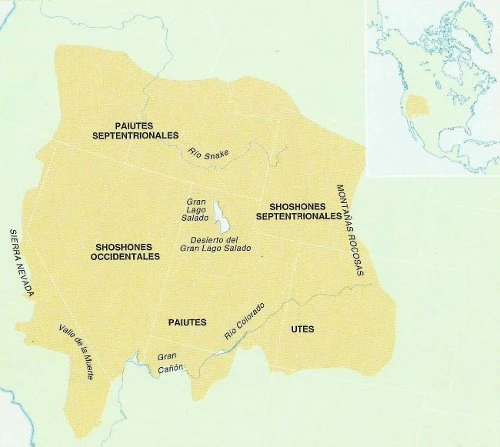


The Wounded Knee Massacre, a dark episode of American history, took place on December 29, 1890 in the Pine Ridge Indian Reserve, located in South Dakota. This tragic event marked a chapter of brutality in relations between Native Americans and the United States government.
The conflict began when a detachment of the 7th Cavalry Regiment, led by Major Samuel Whitside, intercepted a group of Lakots from Chief Si Tanka near Porcupine Butte Peak. The soldiers escorted the Lakots to the Wounded Knee stream, where they encamped. Later, the rest of the 7th Cavalry Regiment, commanded by Colonel James W. Forsyth, arrived, surrounding the indigenous camp and carrying four Hotchkiss cannons, which predicted an imminent tragedy.
On the cold morning of December 29, American soldiers entered the camp to disarm the Lakots. The situation became tense when a member of the tribe named Yellow Bird refused to hand over his rifle, claiming that it had cost him a lot of money. The forcex became violent and, in the middle of chaos, the rifle fired. The detonation was like the spark that lit the powder.
The 7th Cavalry Regiment opened fire indiscriminately against the Lakotas, killing men, women and children, even some American soldiers were wounded or killed in the shooting. The Lakota warriors who still had weapons responded to the fire, but were quickly shot down by the numerical and arms superiority of the American forces.
The result was devastating. At least 150 members of the Lakot tribe lost their lives, including unarmed women and children. Some estimates raise the number of indigenous people killed to more than 300, mostly women and children. In addition, 25 soldiers of the 7th Cavalry Regiment were killed and 39 others were wounded in the confrontation.
Surprisingly, the 20 regiment members who caused the most casualties among the indigenous peoples were awarded the prestigious Medal of Honor, a recognition that has been the subject of controversy and condemnation in subsequent years.
In 2001, the National Congress of American Indians issued resolutions condemning the award of these medals and requesting the United States government to withdraw them. Despite the tragedy and controversy, the site of the massacre has become a National Historic Landmark, a shady reminder of a tragic episode of American history that must not be forgotten.
In the pre-conflict years, the U.S. government continued its policy of looting land from the Lakot tribes, while the unrestrained hunting of bison in the Great Plains, their main source of food, left them on the verge of extinction. The treaty promises to protect the land from reserves from invasion by settlers and gold-seekers were not fulfilled as agreed, causing riots in reserves.
During that time, the news of a Paiute prophet named Wovoka spread among the reservation tribes. Wovoka founded the Dance of Spirits religion and preached that the Christian Messiah, Jesus Christ, had returned in the form of an American Native. According to his vision, the white invaders would disappear from the native lands, the ancestors would lead the natives to thriving hunting lands, bison and other animals would return in abundance, and the spirits of the forefathers would return to Earth. All this would be achieved through the solemn Dance of the Spirits, performed by dragging the feet in silence at the rhythm of a single drum.
However, the Dance of Spirits movement was not only a religious expression, but also a response to the cultural devastation suffered by the native tribes. Their lands were usurped, their herds of bison disappeared, and their way of life collapsed. They increasingly depended on the U.S. government to survive.
American settlers were concerned to see the tribes of the Great Plains and the Great Basin participate in the Dance of the Spirits, fearing that it might trigger an armed conflict. American Indian agent James McLaughlin decided to arrest Lakota leaders to stifle what they called the “Messiah’s madness”. Buffalo Bill became a key intermediary, but the situation became violent when they tried to arrest Toro Sentado.
On December 15, 1890, a violent clash resulted in Toro Sentado's death, which led to his Hunkpapa band fleeing to the Pine Ridge Reserve to join the Spotted Elk leader. Tensions grew, and the authorities sought solutions.
This turbulent era represents a crucial moment in the history of relations between Native Americans and the United States government, marked by the despair of native tribes and the struggle to preserve their ways of life and beliefs.
 Native American Cultures: Myths and magic
Native American Cultures: Myths and magic
You can purchase this book on Amazon.
This book challenges deep-seated stereotypes and offers an enriching perspective that contributes to a more comprehensive and respectful appreciation of the indigenous peoples of North America. Through an understanding of their myths and beliefs, we are taking an important step toward cultural reconciliation and the recognition of the diversity that has enriched the history of this continent.
These mythical stories, many of them linked to the literary genre of fantasy, reveal a world where the divine and the human intertwine in narratives that explain the cosmic order, creation, and the fundamental structure of the universe. Discover how these sacred tales bear witness to the deep connection of the natives with nature and spirituality.
Native Americans: Population and Territories
Native Americans: Cultures, customs, worldview
Traditions, myths, stories and legends